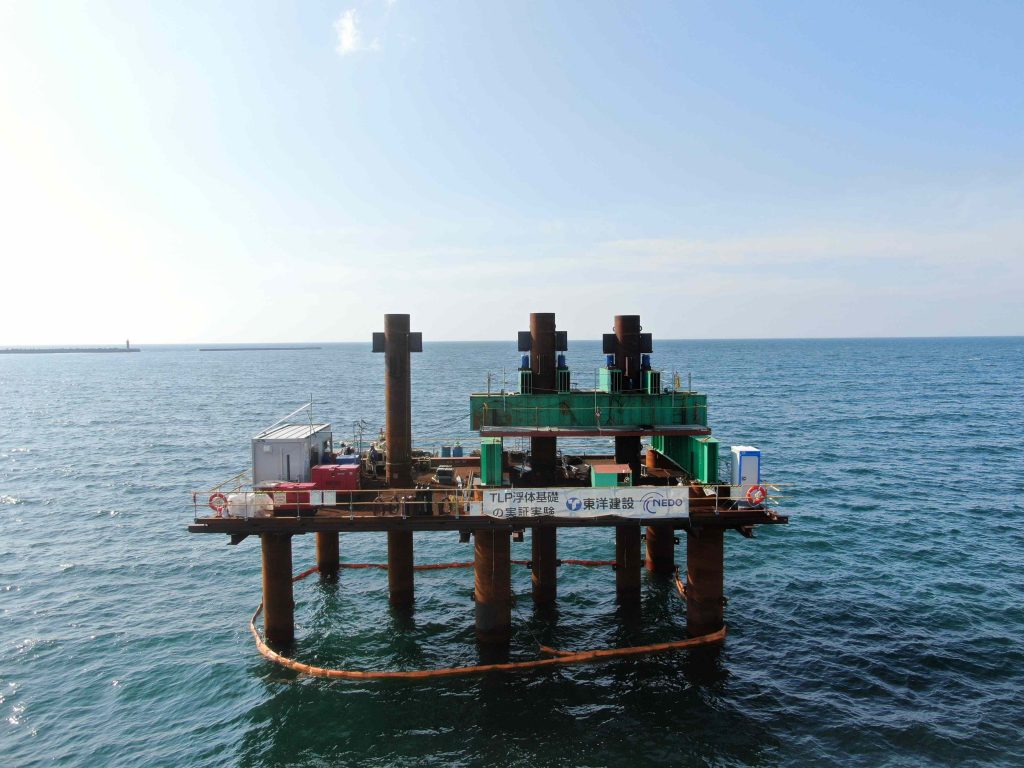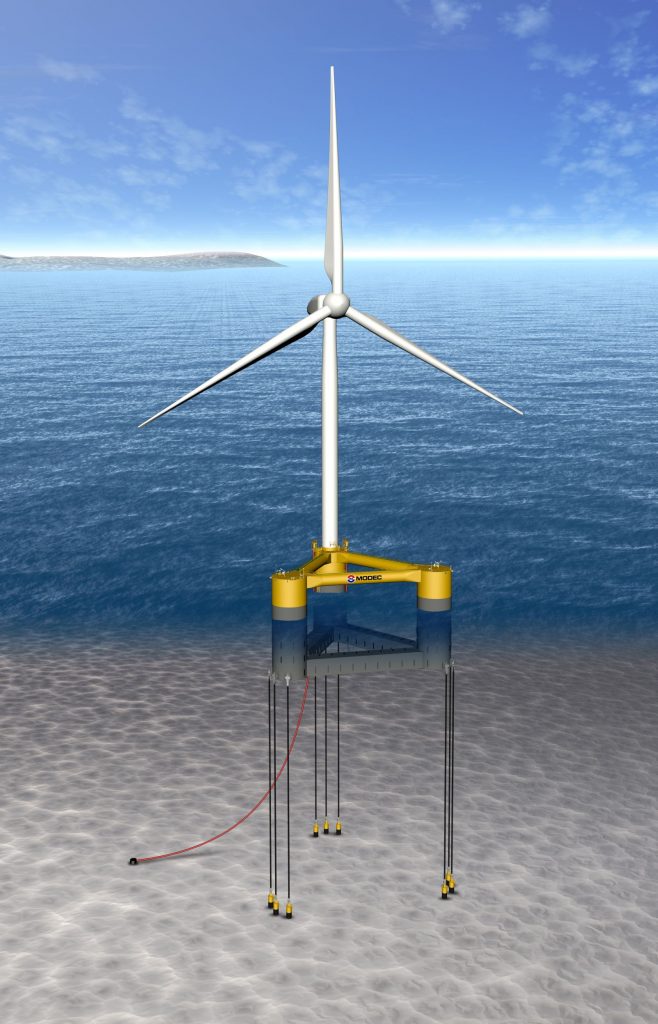- TOYO HISTORY
- LANGUAGE


Toyo Construction Co., Ltd. (hereinafter the “Company”) is delighted to announce that it implemented
the pile pull-out experiment using repeated load (hereinafter the “Experiment”) for the first time in Japan
at Ishikari Bay in Hokkaido, for the verification testing project of floating offshore wind power generation
by TLP method※1.
The Experiment is the on-site demonstration experiment of mooring foundation of which the
Company is in charge, as part of the “Project to Develop Cost-Reducing Technology for TLP Floating
Offshore Wind Turbines” ※2 which the consortium, consisting of the Company, MODEC, Inc.,
Furukawa Electric Industry Co., Ltd., and JERA Co., Ltd. (hereinafter jointly the “Four Companies”)
was selected to conduct by the New Energy and Industrial Technology Development Organization
(NEDO) under the Green Innovation Fund program.
In the Experiment, nation’s largest steel pipe piles were used as the test specimen, and pull-out
experiment using repeated load was conducted, which is the first trial in Japan. Based on the data
obtained by the Experiment, we will establish the design and construction technologies for TLP
mooring foundation.
The Company raises the offshore-wind-power related business as a “growth driver” and is promoting
the business to make it our future core business. Particularly, we put priority and focus on developing
technologies for lowering costs related to the offshore wind power generation business. The Company
will contribute to the realization of carbon neutrality by 2050 by promoting various initiatives for
offshore wind power generation.

Scene of pile load testing

Conceptual drawing of TLP method
(Source: MODEC, Inc.)
TLP method ※1
TLP (Tension Leg Platform “tension mooring”) system is the method for
mooring floating by tension mooring to a seafloor foundation. TLP systems
are expected to reduce the cost of power generation because the high
stability of floating body in the ocean wave enables installation of large 15
MW-class wind turbines, which have the potential to become mainstream in
the future, on compact floating platforms. In addition, TLP mooring lines
are expected to be more socially acceptable than other mooring systems
because they can reduce the space occupied under the sea by 1/1,000
approximately and have less impact on existing businesses such as the
fishing industry and ship operations.
Project to Develop Cost-Reducing Technology for TLP Floating Offshore Wind Turbine ※2
The Four Companies, including the Company, applied to the technology development program for cost
reduction of manufacture and installation of floating foundation for the “Project to Develop Cost-Reducing
Technology for TLP Floating Offshore Wind Turbines” for the realization of the 2050 Carbon Neutral
Declaration by the governments of Japan, proposed by NEDO under its Green Innovation Fund program
【R&D item: Phase 1-②】, and this component technology development project for approximately two
years was accepted on January 21, 2022.
In addition to conducting simulations and demonstrations of component technologies previously studied by
each company — mooring foundations by the Company, floating and mooring systems by MODEC, and
power transmission systems by Furukawa Electric — a basic plan for a 15 MW-class power generation
demonstration facility will be drawn up based on design and environmental parameters provided by JERA
Co., Ltd. The Four Companies will also begin considering supply chains for mass production and cost
reduction with the aim of realizing commercial projects following the power generation demonstration.